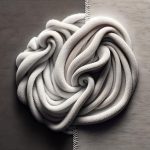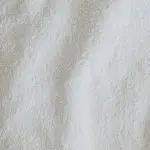Are you in the market for comfortable and stylish clothing, but unsure about the difference between sponge fleece and French terry? Look no further!
In this article, we will explore the composition, characteristics, texture, and applications of sponge fleece and French terry fabrics, as well as their pros and cons.
Sponge fleece and French terry are both popular choices for casual wear, loungewear, and athleisure. While they share some similarities, they differ in construction and texture, which can affect their overall appearance and functionality.
By understanding the differences between these two fabrics, you can make an informed decision about which one is right for you. So, let’s dive in and explore the world of sponge fleece and French terry!
Table of Contents
Definition of Sponge Fleece and French Terry
Looking for cozy, comfortable fabrics? Sponge fleece and French terry are two popular options – sponge fleece is a heavier, fluffier option, while French terry is a lightweight, breathable choice.
Sponge fleece is a type of fabric that’s known for its soft and fluffy texture. It’s made from a blend of cotton and polyester, which makes it warm and breathable at the same time. This fabric is ideal for cooler weather, as it provides insulation and comfort. Sponge fleece is commonly used for sweatshirts, hoodies, and blankets.
On the other hand, French terry is a type of knit fabric made from cotton. It has a smooth surface on one side and loops on the other side, which makes it breathable and moisture-wicking. French terry is a lightweight fabric that’s perfect for warmer weather, as it provides comfort and ventilation. It’s commonly used for t-shirts, shorts, and athletic wear.
Sponge fleece and French terry are two popular fabrics that offer different benefits. Sponge fleece is a heavier, fluffier option that provides insulation and comfort. French terry is a lightweight, breathable choice that offers ventilation and moisture-wicking properties. Depending on your needs and preferences, you can choose the fabric that suits you best.
The Composition and Characteristics of Sponge Fleece
You’ll feel the difference in texture and thickness when you touch this fabric that’s made from a unique blend of materials. Sponge fleece is typically composed of 60% combed and ring-spun cotton and 40% polyester. This fabric is known for its softness, warmth, and moisture-wicking properties. It’s a popular choice for sweatshirts, hoodies, and other casual wear.
Aside from its composition, sponge fleece also has distinct characteristics that set it apart from other fabrics. For one, it has a sponge-like texture that’s soft and plush to the touch. This texture also makes it highly absorbent, which is why it’s great for activewear.
Additionally, sponge fleece is lightweight yet warm, making it a versatile choice for different seasons. Sponge fleece is also known for its durability. This fabric can withstand multiple washes without losing its shape or texture. It also doesn’t shrink or pill easily, which makes it a practical choice for everyday wear.
With its unique blend of materials and distinct characteristics, sponge fleece is definitely a fabric worth trying out.
The Composition and Characteristics of French Terry
If you’re searching for a comfortable and versatile fabric for your casual wear, French terry is an excellent choice due to its unique composition and characteristics.
French terry is a knit fabric that’s made from 100% cotton or a cotton blend. The fabric is looped on one side and smooth on the other, which gives it a soft and cozy feel. Unlike sponge fleece, which is thick and heavy, French terry is lightweight and breathable, making it perfect for year-round wear.
One of the standout characteristics of French terry is its absorbency. The looped side of the fabric is designed to absorb moisture, making it an ideal choice for activewear. Whether you’re hitting the gym or going for a run outdoors, French terry will keep you feeling dry and comfortable.
Additionally, French terry is easy to care for and can be machine washed and dried without losing its shape or softness.
Another benefit of French terry is its versatility. The fabric can be used to create a wide range of clothing items, from sweatshirts and hoodies to shorts and joggers. French terry can also be used as a lining for jackets or as a trim on collar and cuffs. The fabric comes in a variety of colors and patterns, which means you can find something to match your personal style.
Overall, French terry is a must-have fabric for anyone looking for comfort, style, and versatility in their wardrobe.
Differences in Fabric Texture and Appearance
When it comes to fabric texture and appearance, there are a few key differences to keep in mind between smooth and loop textures, as well as fluffy and lightweight appearances. Depending on what you’re looking for in a garment, these factors can greatly impact your decision-making process.
Are you drawn to a plush, cozy look or prefer a sleeker aesthetic? Understanding these distinctions can help you choose the perfect fabric for your needs.
Smooth vs. Loop Texture
As you feel the textures of sponge fleece and French terry, you’ll notice the smoothness of the former compared to the looped texture of the latter. Sponge fleece has a smooth surface that feels soft and plush to the touch. It’s made from a blend of cotton and polyester, which gives it a slight stretch. On the other hand, French terry has a looped texture that creates a bumpy surface. It’s also made from a blend of cotton and polyester, but it’s thicker and heavier than sponge fleece.
When it comes to choosing between sponge fleece and French terry, the texture is an important factor to consider. Here are some nested bullet points to help you understand the differences between smooth and loop textures:
-
Smooth textures are ideal for those who prefer a sleek, polished look. Sponge fleece is perfect for creating a streamlined silhouette, making it a popular choice for activewear and athleisure clothing.
-
Loop textures are great for those who want a more casual, relaxed vibe. French terry is often used for loungewear, sweatshirts, and sweatpants because of its cozy, comfortable feel.
-
Smooth textures tend to be less absorbent than loop textures. If you’re looking for a fabric that can wick away moisture, French terry may be a better option. Its looped texture allows for better air circulation, making it a great choice for workout clothes or towels.
Fluffy vs. Lightweight Appearance
Now that you know the difference between smooth and loop texture, let’s talk about the appearance of the two fabrics.
Sponge fleece has a fluffy appearance that makes it perfect for cozy and warm clothing. This fabric is perfect for snuggling up on the couch or running errands on a chilly day.
On the other hand, French terry has a lightweight appearance that is perfect for more casual occasions. The fabric has a laid-back vibe that pairs well with denim and sneakers.
Whether you’re looking for a cozy outfit or a casual look, both sponge fleece and French terry have something to offer.
Applications for Sponge Fleece and French Terry
To utilize the unique properties of sponge fleece and French terry, you should consider incorporating them into your clothing designs for a comfortable and stylish look. Both fabrics have different applications that can be used to create a variety of clothing items. Here are some examples:
-
Sponge fleece is great for cold weather clothing, such as hoodies and sweatshirts. It has a soft and fluffy texture that provides insulation and warmth. Additionally, sponge fleece is durable and can withstand multiple washes while maintaining its texture over time.
-
French terry, on the other hand, is perfect for warmer weather clothing, such as t-shirts and shorts. It is lightweight and breathable, with a smooth texture that makes it comfortable to wear and move in. French terry is also versatile and can be used for both casual and athletic wear.
-
Both sponge fleece and French terry are suitable for loungewear, such as joggers and sweatpants. They provide comfort and style for everyday wear. Sponge fleece joggers are perfect for a cozy night in, while French terry shorts are great for a casual day out. No matter the occasion, these fabrics can be used to create comfortable and fashionable clothing items.
Incorporating sponge fleece and French terry into your clothing designs can add texture, warmth, and style. Consider using these fabrics for your next clothing line to create comfortable and trendy pieces that your customers will love.
Pros and Cons of Sponge Fleece and French Terry
When deciding between these two fabrics, it’s important to weigh the benefits and drawbacks of each. Sponge fleece and French terry both have their own unique features and characteristics that make them suitable for different applications. Here are some pros and cons to consider when choosing between the two:
| Sponge Fleece | French Terry | |
|---|---|---|
| Pros | Soft and cozy texture, excellent for cold weather, retains warmth well | Lightweight and breathable, great for active wear, dries quickly |
| Cons | Can be bulky and heavy, not ideal for warmer weather, may pill or shed over time | Not as warm as sponge fleece, may require layering in colder weather, may show sweat stains more easily |
Sponge fleece is a great choice for those looking for a warm and cozy fabric for cool weather. Its soft texture and ability to retain warmth make it perfect for loungewear, jackets, and blankets. However, it may not be the best choice for warmer climates or those who prefer lighter weight fabrics. Additionally, sponge fleece may pill or shed over time, requiring more maintenance to keep it looking its best.
On the other hand, French terry offers a more lightweight and breathable option, making it great for active wear or warmer weather. Its quick-drying properties also make it a practical choice for those who sweat more easily. However, it may not provide the same level of warmth as sponge fleece, and may require layering in colder weather. It’s also important to note that French terry may show sweat stains more easily, so it may not be the best choice for those who are particularly active.
Ultimately, the decision between sponge fleece and French terry will depend on your personal preferences and the specific application you have in mind. Consider the pros and cons of each fabric carefully before making your choice.
How to Choose Between Sponge Fleece and French Terry
Choosing the right fabric for your clothing or home decor projects can be challenging, but there are a few key factors to consider when deciding between these two popular options. Sponge fleece and French terry both have unique characteristics that make them suitable for different purposes. Here are some tips to help you choose between the two.
Firstly, think about the level of warmth you require. Sponge fleece is thicker and heavier than French terry, making it a better choice for colder weather. If you’re making a cozy sweatshirt or a warm blanket, sponge fleece would be the ideal choice. On the other hand, French terry is lighter and more breathable, making it a better choice for summer clothing or lighter blankets.
Secondly, consider the texture and feel of the fabric. Sponge fleece has a plush, soft texture that feels great against the skin, while French terry has a looped texture that is more textured. If you want a smoother, more luxurious feel, sponge fleece is the way to go. If you prefer a more structured texture, French terry is the better option.
Choosing between sponge fleece and French terry depends on your needs and preferences. Consider the level of warmth you require, as well as the texture and feel of the fabric. With these factors in mind, you can make an informed decision and choose the fabric that’s right for your project.
- 3D Printed Fabrics: The Next Big Thing in Fashion - July 23, 2024
- Laser Engraving on Fabrics: Techniques and Applications - July 23, 2024
- Digital Fabric Printing: A Comprehensive Guide - July 23, 2024






